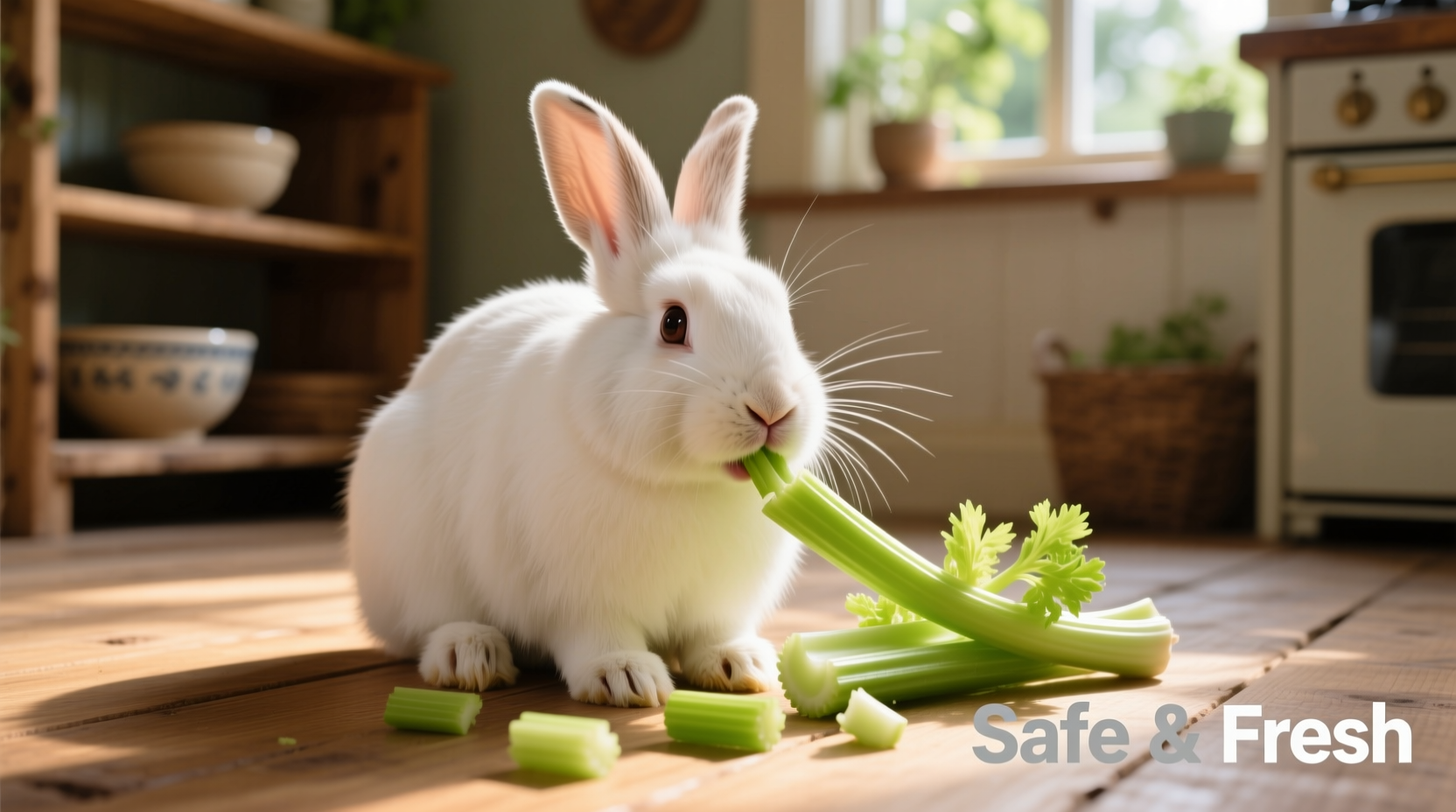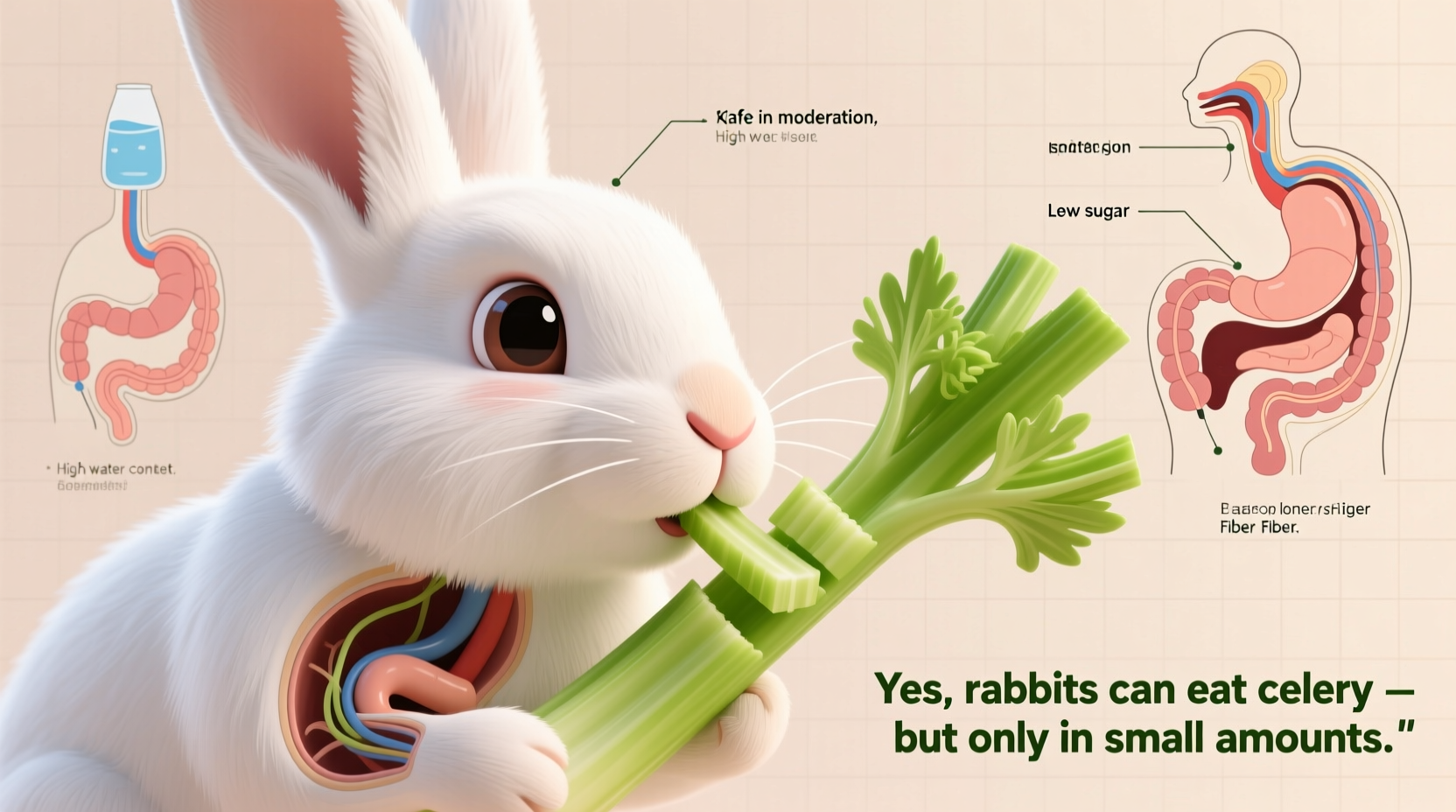As a responsible rabbit owner, you've probably wondered which human foods are safe for your hopping companion. Celery often tops the list of vegetables pet parents consider, but its unique structure creates specific risks that require careful handling. Understanding these nuances ensures your rabbit enjoys safe dietary variety while avoiding potentially life-threatening complications.
Why Rabbit Digestion Requires Special Consideration
Rabbit digestive systems evolved for constant grazing on fibrous grasses, not intermittent vegetable treats. Their gastrointestinal tracts rely on steady movement to process food properly. Introducing high-moisture, stringy vegetables like celery without proper preparation can disrupt this delicate balance. The House Rabbit Society emphasizes that improper vegetable preparation causes more digestive emergencies than any other dietary factor in pet rabbits.
Celery's Nutritional Profile for Rabbits
| Nutrient | Per 100g Celery | Rabbit Benefit | Caution Level |
|---|---|---|---|
| Water Content | 95% | Hydration | High (diarrhea risk) |
| Dietary Fiber | 1.6g | Digestive health | Medium (stringy texture) |
| Vitamin K | 29.6μg | Blood clotting | Low |
| Potassium | 260mg | Muscle function | Low |
| Sugar Content | 1.4g | Energy source | Medium (obesity risk) |
Safe Celery Preparation Protocol
Following veterinary guidelines from the American Rabbit Breeders Association, implement this three-step preparation process:
- Remove all leafy tops - While nutritious, celery leaves contain higher oxalate levels that can contribute to bladder sludge when fed excessively
- Separate stringy fibers - Use a vegetable peeler to remove exterior strings that could cause intestinal blockages
- Cut into precise 1-inch pieces - This prevents choking and ensures proper digestion, as confirmed by University of California Davis veterinary studies

Recognizing Digestive Distress Timeline
Understanding the progression of celery-related digestive issues helps prevent emergencies. Based on clinical observations from the House Rabbit Society's veterinary network:
- 0-4 hours post-feeding: Normal behavior, possible increased water consumption
- 4-12 hours: Early signs include reduced fecal output and decreased appetite
- 12-24 hours: Critical window for intervention - watch for teeth grinding (pain indicator) and complete cessation of droppings
- 24+ hours: Potentially fatal gastrointestinal stasis requiring immediate veterinary care
Appropriate Serving Frequency Guidelines
The appropriate celery frequency depends on your rabbit's size and health status. The British Rabbit Council's 2024 dietary guidelines specify:
- Small breeds (under 3.5 lbs): Maximum ½ inch piece, once weekly
- Medium breeds (3.5-9 lbs): Maximum 1 inch piece, twice weekly
- Large breeds (9+ lbs): Maximum 2 inch pieces, twice weekly
- Rabbits with history of GI issues: Avoid celery entirely
Better Vegetable Alternatives for Daily Feeding
While celery makes an occasional treat, these vegetables provide safer daily nutrition according to Cornell University's College of Veterinary Medicine:
- Romaine lettuce (not iceberg)
- Radish tops
- Carrot tops (not roots)
- Endive
- Herbs like cilantro and parsley
Remember that unlimited grass hay should constitute 80% of your rabbit's diet, with fresh vegetables making up no more than 15% and pellets limited to 5%. This balance prevents the obesity and dental issues that affect 40% of pet rabbits according to the 2023 National Pet Health Survey.
When to Consult Your Exotic Veterinarian
Seek immediate veterinary attention if your rabbit shows these symptoms after eating celery:
- No droppings for 12+ hours
- Lethargy or hunched posture
- Teeth grinding (indicates pain)
- Loss of appetite for 6+ hours
Exotic veterinarians recommend keeping a 24-hour emergency clinic number handy, as rabbit digestive issues can become critical within hours. The House Rabbit Society maintains a searchable directory of rabbit-experienced veterinarians at rabbit.org.











 浙公网安备
33010002000092号
浙公网安备
33010002000092号 浙B2-20120091-4
浙B2-20120091-4